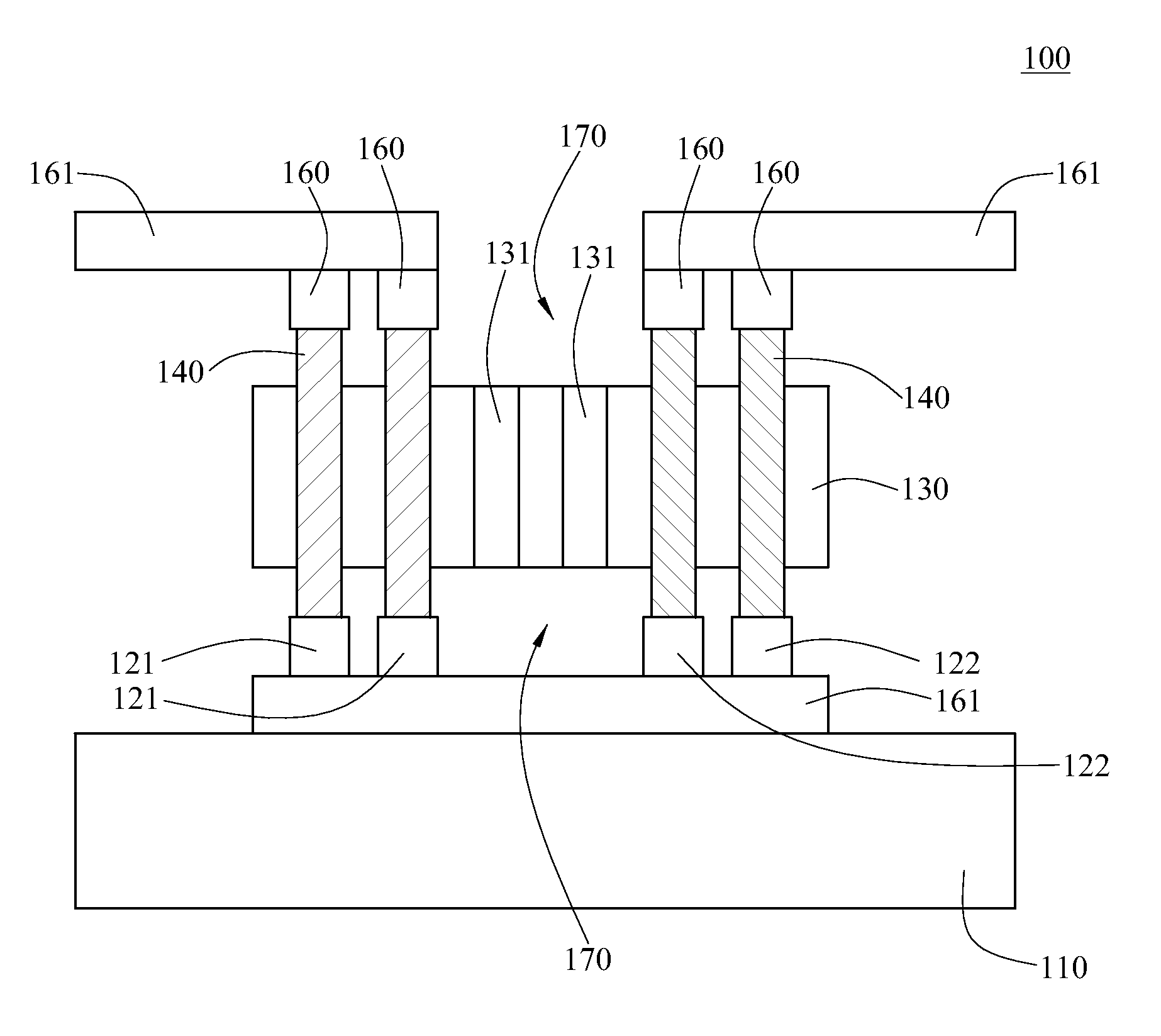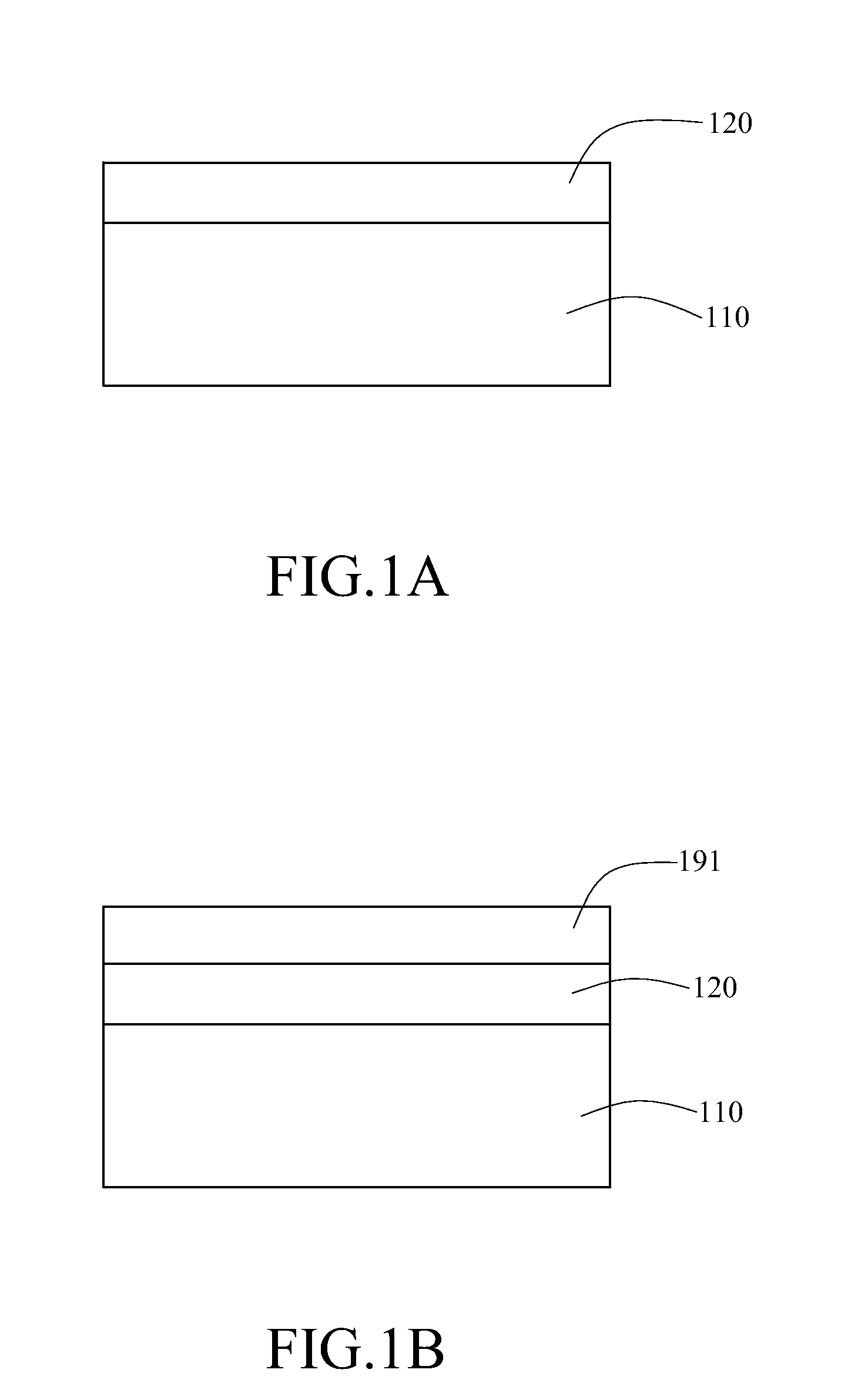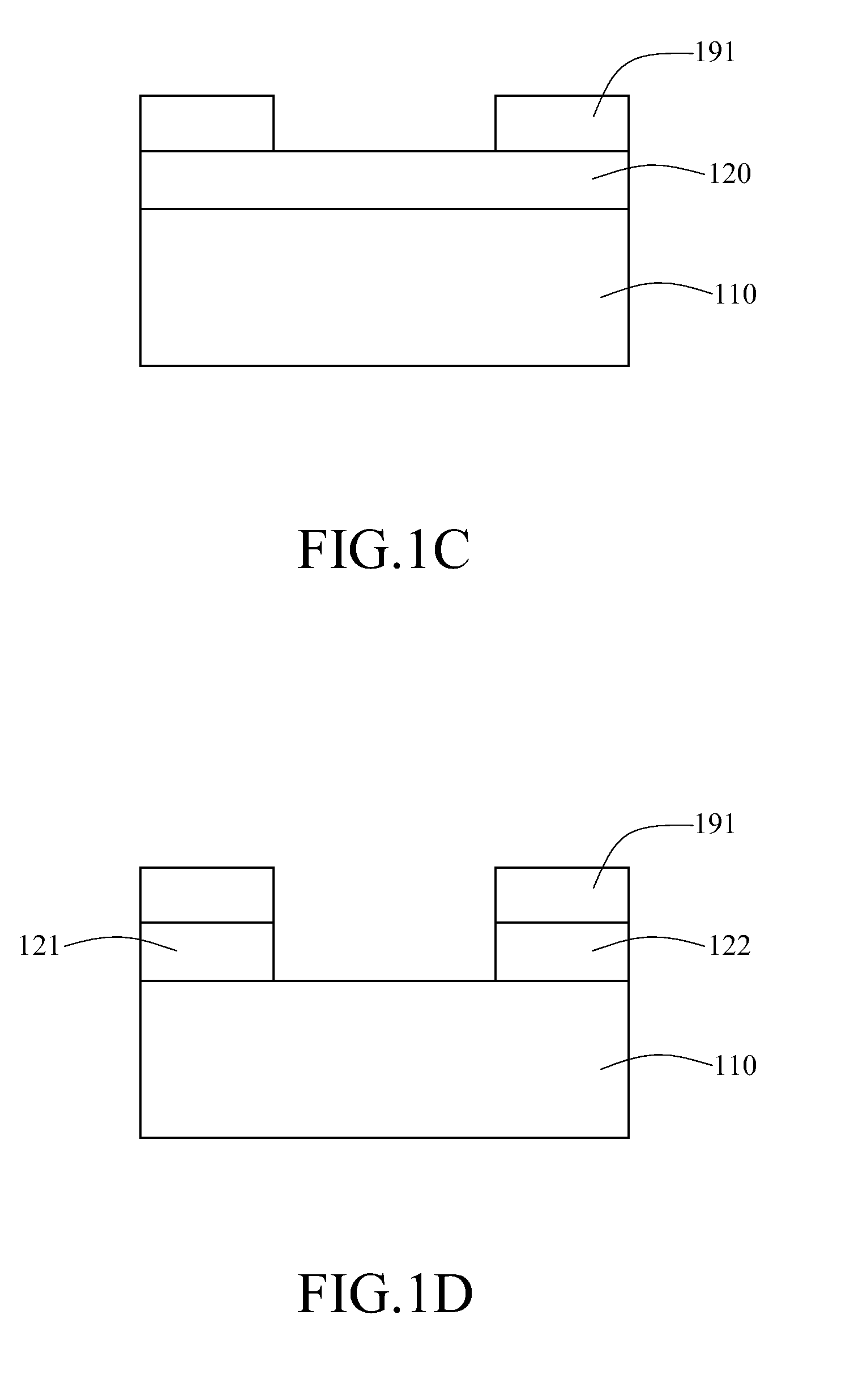Thermoelectric nanowire array with low heat leakage and manufacturing method thereof
a technology of thermoelectric nanowires and nanowires, which is applied in the direction of superimposed coating process, liquid/solution decomposition chemical coating, lighting and heating apparatus, etc., can solve the problems of insignificant economic benefits, low efficiency of thermoelectric devices, and limited to small-scale applications, so as to reduce the thermal conduction property of template materials and improve the performance of thermoelectric nanowire arrays. , the effect of low thermal conductivity
- Summary
- Abstract
- Description
- Claims
- Application Information
AI Technical Summary
Benefits of technology
Problems solved by technology
Method used
Image
Examples
third embodiment
[0048]An effective thermal conductivity equation of a composite template structured formed by combining the polymeric material 180 having a low thermal conductivity with the template material 130 disclosed in the present invention is as follows:
λeff=(1ϕtemplateλtemplate+ϕlowthermalconductivitymaterialλlowheatconductivitymaterial)
[0049]where, λtemplate is the thermal conductivity of the template material, λlow thermal conductivity material is the thermal conductivity of the polymeric material, φtemplate is the volume fraction of the template material, and φlow thermal conductivity material is the volume fraction of the polymeric material.
[0050]When the volume fraction of the polymeric material is high or the thermal conductivity of the polymeric material is low, the polymeric material becomes a dominant factor in the denominator of the above equation, thereby reducing the thermal conductivity of the composite template structure. Taking a Al2O3 porous template as an example, the therm...
second embodiment
[0051]FIGS. 7 and 8 are schematic structural views of a thermoelectric nanowire array in different forms of the present invention. The difference between the thermoelectric nanowire array 100 shown in FIG. 7 and the structure of the second embodiment shown in FIG. 3L lies in that, no template material 130 exists between the N-type region 121 and the P-type region 122 of the first electrode 120, and a third electrode 161 is disposed between the N-type region 121 and the substrate 110 and between the P-type region 122 and the substrate 110. Therefore, after the process steps of forming the template material 130, the template material 130 between the N-type region 121 and the P-type region 122 is removed, such that the air wall 170 exists both between the first electrodes 120 and between the second electrodes 160, thereby effectively blocking the reflux phenomenon of thermal energy. In the thermoelectric nanowire array 100 shown in FIG. 8, the template material 130 at two ends of the n...
PUM
| Property | Measurement | Unit |
|---|---|---|
| thermoelectric | aaaaa | aaaaa |
| area | aaaaa | aaaaa |
| thermal energy | aaaaa | aaaaa |
Abstract
Description
Claims
Application Information
 Login to View More
Login to View More - R&D
- Intellectual Property
- Life Sciences
- Materials
- Tech Scout
- Unparalleled Data Quality
- Higher Quality Content
- 60% Fewer Hallucinations
Browse by: Latest US Patents, China's latest patents, Technical Efficacy Thesaurus, Application Domain, Technology Topic, Popular Technical Reports.
© 2025 PatSnap. All rights reserved.Legal|Privacy policy|Modern Slavery Act Transparency Statement|Sitemap|About US| Contact US: help@patsnap.com



